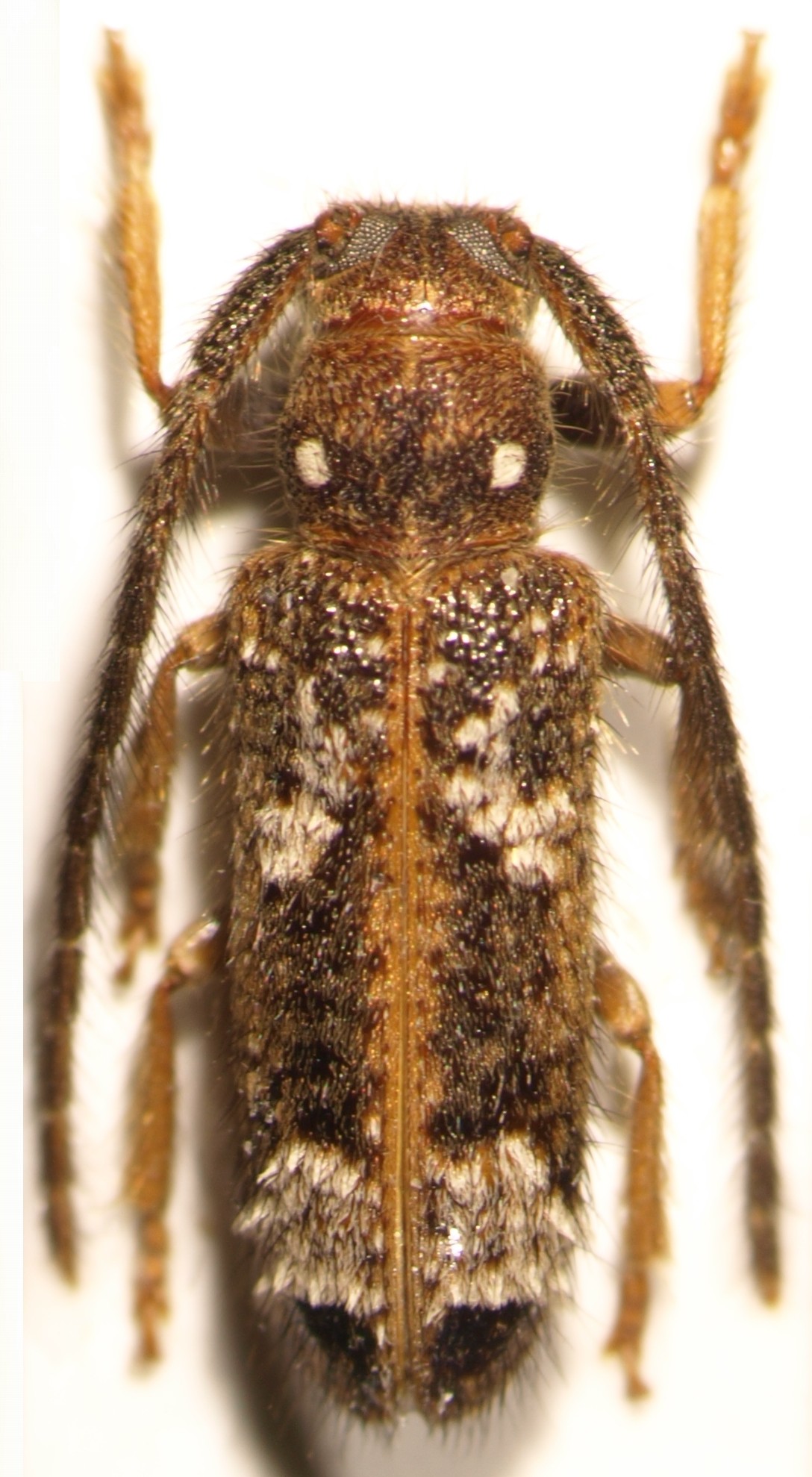| Author |
 Topic Topic  |
|
|
Vitali
Member Rosalia
  
Estonia
994 Posts |
 Posted - 05/02/2013 : 16:22:59 Posted - 05/02/2013 : 16:22:59



|

365.8 KB
Inspired by the success with Ocularia I dare to place a photo of another African beetle. Sophronica, I guess, almost hopeless, but a very distinctive species... and it is beautiful. |
|
|
Vitali
Member Rosalia
  
Estonia
994 Posts |
 Posted - 22/12/2013 : 12:18:26 Posted - 22/12/2013 : 12:18:26



|
Jérôme can probably help with this species (?). I used Breuning's revision for Sophronica, despite many mistakes with thesis numbering.
Although the third segment is not longer than fourth in antennae (as it is claimed in the revisoin), it seems to me that this species is close to Sophronica albopicta Breuning 1940 (Uganda, Congo) or Sophronica albopunctata Breuning 1949 (Kenya). At least both have two white spots in pronotum and both have white pattern in elytra. The granulated basal part of elytra indicates more to S. albopicta.
|
 |
|
|
Jérôme Sudre
Member Rosenbergia
   
France
1773 Posts |
 Posted - 25/12/2013 : 10:45:21 Posted - 25/12/2013 : 10:45:21



|
Bonjour
Je n'ai pas cette bête cependant elle me semble bien être S albopicta Breuning.
Espèce peu commune car je ne l'ai vu que 2 fois (je n'en avais pas tiré de photo!). Maintenant les Sophronica en tous cas beaucoup d'entre elles, se capturent au battage....Et comme le battage est peu pratiqué en Afrique et bien on voit souvent les mêmes espèces (celles de lumière) et rarement celles de battages bien quelles ne doivent pas être rares. |
 |
|
|
Vitali
Member Rosalia
  
Estonia
994 Posts |
 Posted - 25/12/2013 : 11:16:24 Posted - 25/12/2013 : 11:16:24



|
| Dear Jérôme. These beetles are collected by Malaise traps. This method gives also very good results with small beetles. I have prepared only small part of the material, but I have found already 2 specimens of this species. I'll place later the photos of other species here. There are also lots of small Saperdini, which can certainly offer some interest. |
 |
|
|
Jérôme Sudre
Member Rosenbergia
   
France
1773 Posts |
 Posted - 14/11/2015 : 18:02:51 Posted - 14/11/2015 : 18:02:51



|
Good evening
Could you tell me if this has Sophronica, at the apex of each wing cover a black circular spot? If this is the case it is well to S albopicta Breuning |
 |
|
|
Vitali
Member Rosalia
  
Estonia
994 Posts |
 Posted - 14/11/2015 : 20:35:26 Posted - 14/11/2015 : 20:35:26



|
| Yes, all specimens have a black apical spot, which with some reservation can be called circular. Thank you, Jérôme. |
 |
|
|
Jérôme Sudre
Member Rosenbergia
   
France
1773 Posts |
 Posted - 15/11/2015 : 08:00:41 Posted - 15/11/2015 : 08:00:41



|
Bonjour
So that's it ! |
 |
|
| |
 Topic Topic  |
|


